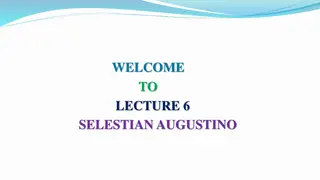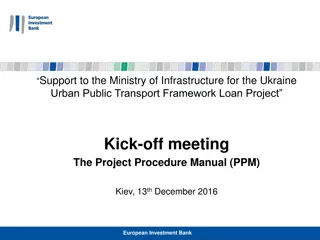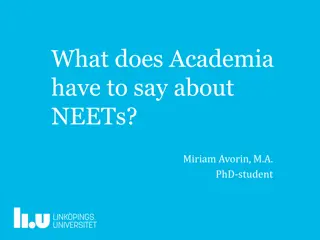SLADENO Project: Providing Opportunities for NEETs
SLADENO project focuses on setting up a system for young NEETs aged 16-30, aiming to improve their training methods and qualifications. Partner organizations collaborate with local authorities and institutions to reach and empower young NEETs through inclusive education and vocational training.
Download Presentation

Please find below an Image/Link to download the presentation.
The content on the website is provided AS IS for your information and personal use only. It may not be sold, licensed, or shared on other websites without obtaining consent from the author.If you encounter any issues during the download, it is possible that the publisher has removed the file from their server.
You are allowed to download the files provided on this website for personal or commercial use, subject to the condition that they are used lawfully. All files are the property of their respective owners.
The content on the website is provided AS IS for your information and personal use only. It may not be sold, licensed, or shared on other websites without obtaining consent from the author.
E N D
Presentation Transcript
SLADENO Sharing, Learning and Developing European NEET opportunities. SLADENO| LIONHEART IN THE COMMUNITY | PK 10.04.2017
Project Goals Horizontal: Inclusive Education, Training and Youth; Vocational Education and Training (VET) : Enhancing access to training and qualifications for all through C- VET; Youth: Promoting empowerment, open to cross sectorial cooperation and Active Citizenship of young people.
Description SLADENO project is to set up a system for young NEETs (Not in Education, Employment or Training) between the age of 16 and 30 years. Partner organisations will cooperate with local authorities and institutions (such as Employment Agencies, Job Centres, Youth Welfare offices and Youth Institutions) to reach as many young NEETs as possible and to set up and improve training methods for them in addition to companies and VET centers in the region.
Target Group The target group are young NEETs, often early school leavers or those that have left vocational training, have a low level of education, learning difficulties or other educational difficulties or behavioural problems. That means that they often have bad experience with formal education. The project is set up cross-sectoral and combines formal Education and Training methods as well as internships and practical work experiences with Informal learning methods of the youth sector in order to provide a low level inclusive, and most important, practical training method which will give all young NEETs a Second Chance to gain Vocational Training and Employment. In the VET sector the priority is therefore to give access for this disadvantaged target group to complete vocational training while in the youth sector, the main aim is the empowerment of the young NEETs through training. NEETs often face social exclusion, therefore it is important to empower them through the training in order for them to be Active Citizens.
Partners IB Brandenburh Nordost - Germany Strengths Vocational Training Centre; Vocational School, Secondary School, Coaching Centre for long term unemployed, several youth clubs, 5 asylum seekers centres. Focus on disadvantaged youths and learning disabilities, several European networks; 20 + years experience. Weaknesses Potential language barriers on the European Training Platform for students and trainers.
Partners EDUCA International o.p.s Czech Republic Strengths: Consortium in partnership with several universities for traineeships within Erasmus+, over 200 traineeships for students in 8 Czech Universities; Focuses on drop-outs; Participated in Pilot Second Chance School with Sweden, Published a book illustrated by a student of Second Chance School Sweden. Weaknesses: Recruitment and retaining participants; Lack of a Youth Centre for all activities; Potential language barrier for trainers and students on ETP Platform.
Partners Folkeuniversitet (FUMN) - Norway Strengths Over 50 years of experience in VET; Work with 100 companies; Good balance with Non-formal and Formal Education and Training; Largest operator in region; Weaknesses Potential language barrier for Students and Trainers on ETP Platform.
Technology New technology being used by Trainers and Youth: European Training Platform - http://sladeno.eu/moodle/; Benefits: One site where Trainers can monitor and evaluate students courses, progress and communicate with other trainers internationally RE Good Practice. Standards being adopted: - Efficiency and Partnership development.
Team Resources Resources Allocated to Project People: 2 Youth Officers to provide recruitment of youth for September start (15), Develop partnerships and collect Letters of Intent; 2 Trainers to train in Germany and provide training for staff in the UK. Equipment; ( All trainers to bring IT Equipment for Training in Germany); Locations ( Germany, Norway, UK, Czech Republic); Support & outside services; ( Letters of Intent and Partnerships with Local Organisations).
Expected Results Each partner will have built a network of relevant authorities and stakeholders in the region. 10 employers, 3 schools and 5 institutions. *Letters of Intent necessary. Increase in awareness of the issues of NEETS. Better methodology for trainers and youth workers involved in SST (Measured by handbook and use of European Training Platform). Curriculum containing all best practice will be developed. Joint Staff Training with 8 participants, 2 of each from all partners.
Expected Results Trainers to learn methodology ( Peer to peer learning ); Of 60 NEETS trained in the pilot phase at least 40 will have either found employment or are continuing training/education; 3 best practice examples from organisation and trains for each category ( Administration/Set up, Curriculum, Informal and Formal Method in handbook); Handbook and Certification; Trainers / Students to participate on ETP forum; 4 Training modules on ETP for Trainers and Students.
Schedule Deadline 29th April 2018 Tutors / Youth Officers to provide summary examples of Best practice: - Evaluating two target groups; 16 19 and 19+; Methods of communication, Method or preparation, Choice of Engagement, What tutors do to monitor, engage and retain youth; 15th 19th May 2017 (2 Travel days) Trainers peer to peer learning, ETP Training and presenting Best practice of each organization in Germany; 26th 29th November 2017 ( 2 Travel days) - Project Meeting in the UK, London; 26th 29th June 2018 ( 2 Travel days) Project Meeting in The Czech Republic; September 2017 Pilot program to begin with young people based on curriculum.
Current Status High-level overview of progress against schedule. On-track in what areas Letters of Intent Partnerships Research on situation in Lambeth, Southwark, Wandsworth. Contracts, consent forms. Behind in what areas Good Practice documents from Trainers and Youth officers Recruitment of Youth for Pilot program start September 2017 Project Brief to staff - Unexpected delays or issues Recruitment of Youth
Related Documents Websites: http://sladeno.eu/ ETP Platform: http://sladeno.eu/moodle/?lang=en Facebook: https://www.facebook.com/SLADENO/?fref=ts Submit questions Playne Kensington; playne@litc.org
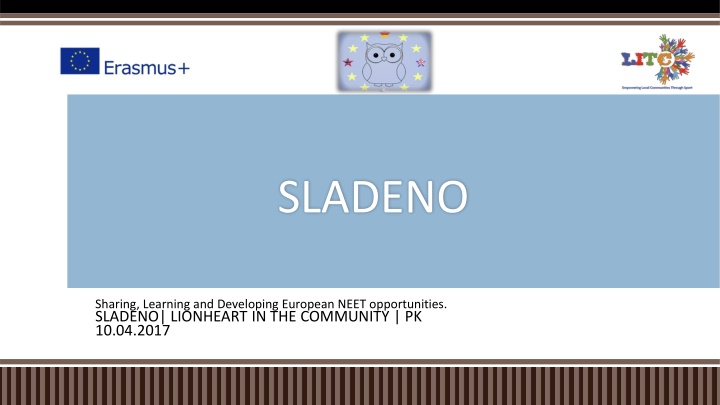


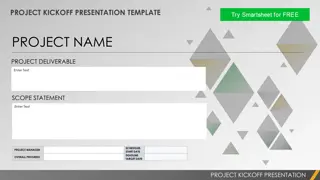


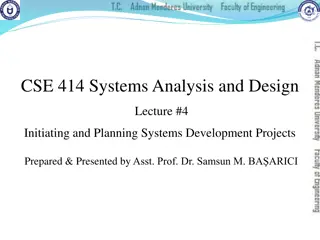
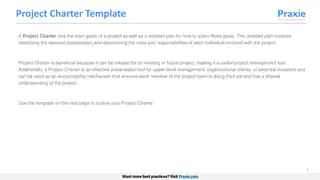
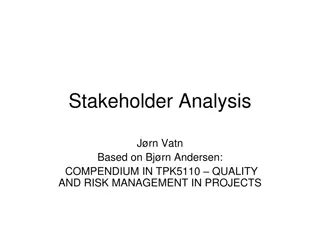


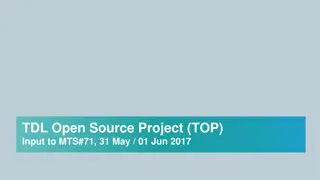
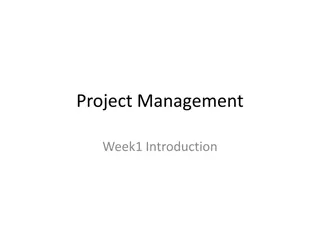
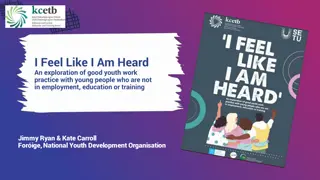


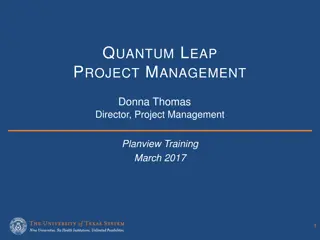
![Project Initiation Document for [Insert.Project.name] [Insert.Project.number]](/thumb/226757/project-initiation-document-for-insert-project-name-insert-project-number.jpg)
